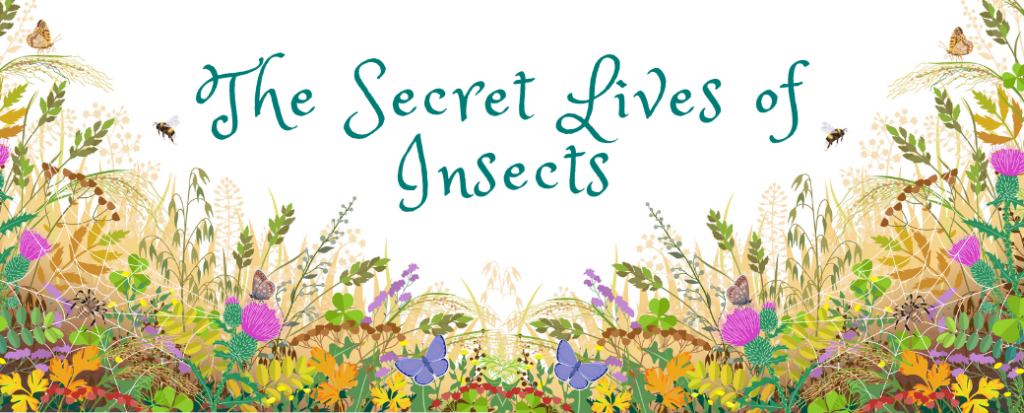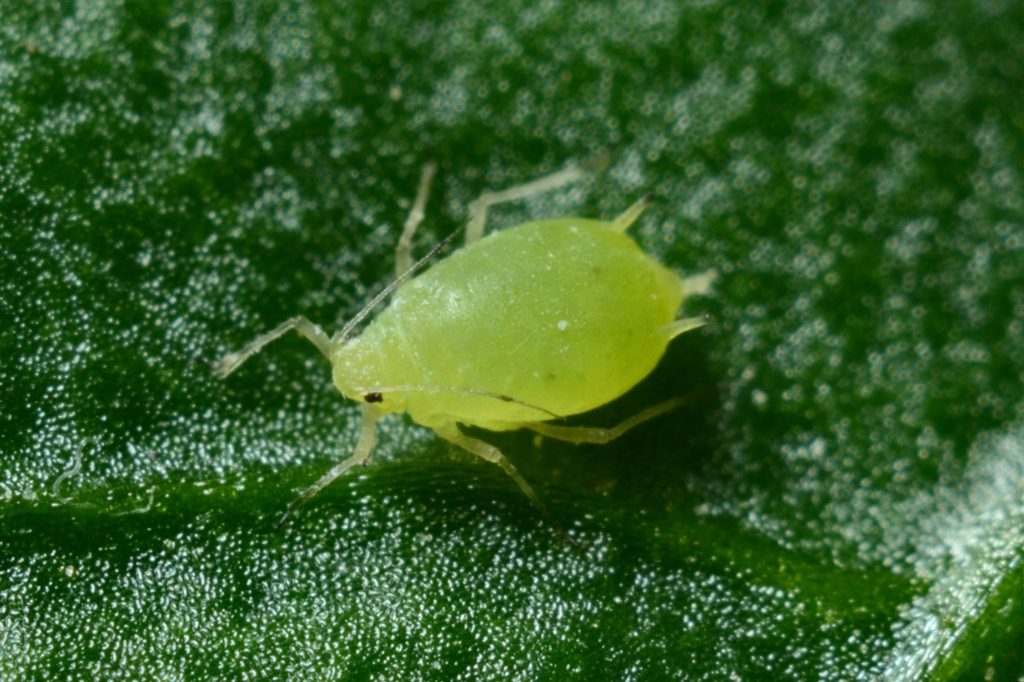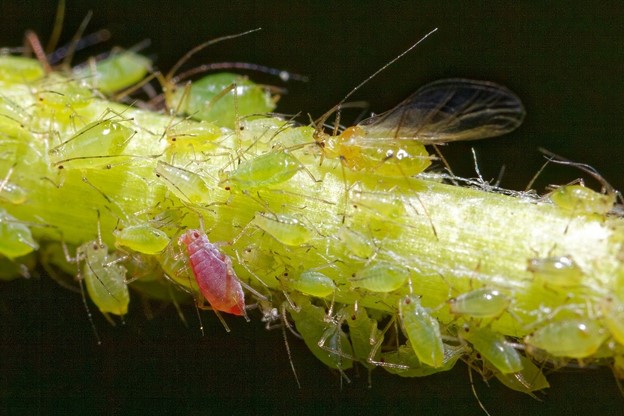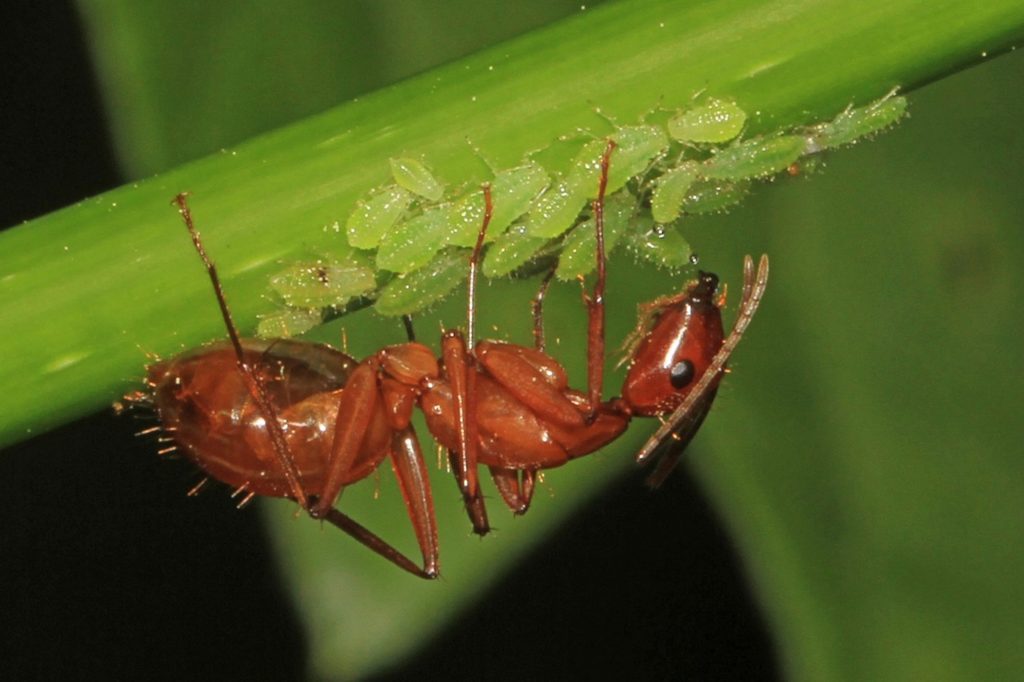
Aphids: Life at the Base of the Food Chain
By Judy Ferris, ACLT Guest Blogger
This is the first in a series of blog posts providing a glimpse into the secret lives of insects that live among us – some friends, some foes. The author, Judy Ferris, describes herself as a born nature-girl, a gardener since the age of 10, and a birder for 45 years. Judy volunteers at ACLT’s Double Oak Farm as a ‘Flower Girl’ – a small team that manages several Flower Gardens. According to Judy, “It’s hard to be around flowers without noticing the insects they attract!” Hence the recent dive into the world of insects. Though still an amateur, Judy delights in learning about insects and sharing with others, the stories of these fascinating and vital creatures.
Let’s start our exploration of the insect world at the base of the food chain – with aphids! As we know, aphids are sucking insects, with specialized mouthparts to access sugary sap in the phloem (vascular tissue) of plants. To our eyes, aphids are rather featureless; like miniature balloons of sugar water with legs.
To would-be predators, however, each plump, hapless aphid is a hit of sugar in an easy-to-open container – soft and rubbery on the outside, juicy and irresistibly succulent within.

Aphids have been on earth since before the age of dinosaurs and are still going strong. How have these walking sugar-blobs survived so long while other, mightier species died out forever? Turns out that these tiny bugs have quite a few tricks up their skinny little sleeves.

Here in Aphid World, we are at the bottom of the food chain. If you are an aphid, you are a featured item on the menu of many insect species. Thus, there is one thing you need to do really well; reproduce quickly! Aphids have made rapid reproduction into an art form. How do they do this? The solution is unconventional, yet its simplicity harkens back to the aphid’s ancient origin; cloning!
Here’s how it works. In spring, aphids emerge from over-wintering eggs. All are females. These original females generate more female offspring asexually, giving birth to live young rather than laying eggs. Why wait around for eggs to hatch when you can pop out babies right away? Second-generation aphids are also females and may even be pregnant with a third generation of daughters before they themselves are born! Yes, that’s right – mothers giving birth to daughters and granddaughters!
With this ‘telescoping’ of multiple generations, aphids can multiply exponentially. It is estimated that under ideal conditions, with no predators, pathogens, or parasites, a single female aphid could produce 600 billion sap-sucking descendants in a single season!

Another unique aphid talent is their ability to poop sugar water (also known as ‘honeydew’)! Yes, aphid poop is the basis for the famous win-win relationship between aphids and ants.
Aphids poop honeydew for sugar-loving ants. Ants, in turn, may serve as soldiers to protect their coveted aphid herd from predators. Through adaptations like cloned babies and pooping sugar, aphids have survived on earth for 280 million years and will likely be here long after we humans have vanished.
Lest you are now having nightmares about planet Earth inundated with aphids… Not to worry! There are plenty of insect predators who relish a sweet aphid feast; Lady Beetles, Flower Fly larvae, parasitic wasps, aphid midges, and even ‘aphid lions’ (the larvae of Lacewings). We will meet some of these predators in the coming weeks. Fasten your seatbelts. It may be a wild ride!
Now available! Read the next installment in The Secret Lives of Insects – “Lacewings: Beauty and the Beastly Babies”!